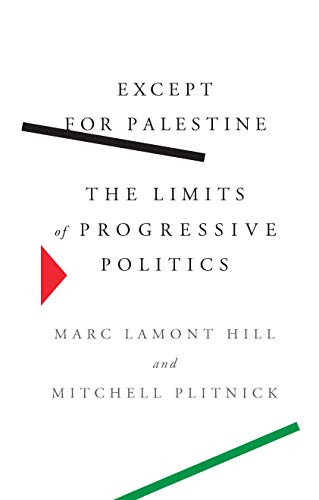The Case for a Job Guarantee, Pavlina R. Tcherneva, Polity, 2020, pp. 149, ISBN: 978-1-5095-4209-3
As a result of the COVID-19 pandemic, the US unemployment rate shot up from its historic lowest of 3.8% to 13% in May, when a full 20.5 million people filled the ranks of the unemployed. The US government estimated that the actual unemployment rate might have gone up to 16%, dwarfing the increase due to the Great Recession of 2007-2008, when it peaked at 10.6%. If the spread of the disease is not halted, and the ensuing containment measures continue, the unemployment rate may even overtake the historic highs of the Great Depression era when every fourth American of working age was unemployed.
The effects of unemployment are numerous. The unemployed suffer a permanent loss of income and have a harder time finding employment due to the unwillingness of the firms to hire individuals with gaps in their work experience. The longer one is out of work, the longer it takes to find one, and thus begins the spiral of poverty which threatens the wellbeing of the individuals caught in it. The unemployed also suffer higher rates of depression, alcoholism, and anxiety. Being unemployed is associated with a twofold to threefold increased relative risk of death by suicide, which in communities with high unemployment rates leads to suicide clusters. An analysis of metadata from 63 countries found that one out of five suicides is due to unemployment. In their newly published book Deaths of Despair and the Future of Capitalism, Angus Deaton and Anne Case argue that among white people aged 45-54, deaths due to alcoholism, drug abuse, and suicide have increased. Previously, in the 1980s, the same causes of deaths were responsible for a steep rise in suicide among blue-collar African American population when their jobs were shipped overseas. Unemployment is not only personal but social in nature and is its own Catch-22.
Given these deleterious consequences of unemployment, it is astonishing that the governments would not strive for full employment. In fact, in the United States, full employment is defined by a level of unemployment due to a policy known as the Non-Accelerating Inflation Rate of Unemployment (NAIRU). NAIRU is a theoretical policy target that maintains that below a certain level of unemployment, inflation will begin to rise. It is essentially the same as Milton Friedman’s natural rate of unemployment, the idea that won him a Nobel Prize, which states that full unemployment does not mean zero unemployment and that any attempt at increasing employment will ultimately lead to a return to that natural rate. He reasoned that an increase in the supply of money would lead to a temporary increase in employment while the workers adjust their pay expectations. In the next wage negotiation period, they will increase their demands in order to recover the real costs lost, thereby leading companies to shed off labour and the economy returning to the previous rate of unemployment.
Pavlina Tcherneva, an associate professor at Bard College and a Modern Monetary Theory economist, presents a clear and articulate antidote to the current unemployment predicament and thinking in her book The Case for a Job Guarantee. She states that the unemployment rate is a policy choice rather than a natural state of the economy. After all, it is the Fed who determines the rate of unemployment through its double mandate.
The job guarantee is a permanent, federally funded, decentralized program that offers voluntary employment opportunities to all those ready and willing to work. Its goal is to provide a counter-cyclical policy aimed at stabilizing the economy, while at the same time providing an employment safety net with all the attendant social benefits. Its goal is to serve a public purpose and create job opportunities that would contribute to building a green economy centred on solidarity and care while addressing other social ills. Due to the size of the program, the job guarantee would also be able to establish an effective minimum wage for the economy as a whole. By setting the minimum wage to be a (so-called) living wage, the job guarantee would force private companies to raise their wages in order to attract workers who could always switch to the public option. In this way, it also serves as a price support policy, stabilizing the wage floor and acting to support prices in times of recessions. The job guarantee proposes to turn employment into macroeconomic stabilizers, rather than rely on unemployment to cushion business cycle fluctuations.
However, Tcherneva, and MMT economists generally, set the “living wage” themselves. Fifteen dollars per hour would not be a product of collective bargaining the workers would enjoy, but rather mandated by the state. This would in turn weaken the position of other unions attempting to bargain their wages with their employers.
Generally, universal programs are promoted at the expense of other features of the social safety net. Tcherneva proposes that the job guarantee not be a workfare program that would require people to work for their existing benefits. The program would not replace health care, education, and housing assistance.
For Tcherneva, “the ambition of the Job Guarantee is to transform the macroeconomic stabilization model [and] provide environmentally sustainable public service employment opportunities.” The emphasis on the public nature of the job guarantee cannot be overstated. The private sector’s goal is to maintain their bottom line and distribute profits to shareholders rather than employ people. The number of people private companies employ is determined by the maximum possible profit they can reap. Moreover, the federal government, due to its monetary sovereignty, is the only entity able to fund the program. It can guarantee the funding of the program in the long run for as long as there are unemployed resources, and the economy does not exceed its capacity, in which case, inflation would ensue. True to the MMT tradition, Tcherneva differentiates between financial (monetary) and real (capacity) constraints. Instead of funding the unemployment regime, the job guarantee would commit to funding employment.
The case for the job guarantee that Tcherneva presents is deceptively simple in its cohesiveness. Like the MMT, it rests on particular ideas of money and work, which are not fully developed in the book. MMT’s theory of money rests on chartalism, the belief that money is independent of its function as a means of exchange and derives its value from its status as a legal tender created and backed by a sovereign government. Tcherneva’s arguments follow from this basic premise and are conditioned by it.
With regards to work, Tcherneva’s proposal that the job guarantee could employ people in the care economy follows from the chartalist theory of money. Given that money can be printed into existence, the government can fund anything it wants, including the care economy. However, money represents a general equivalent form of value dependent on the historical stage of the development of forces of production. So before capitalism, coconuts, sugar, wheat or whatever else was socially accepted as a general equivalent represented money. Any commodity could serve as money, and thus it arises out of its production. Therefore the fundamental property of money becomes its measure of the value of commodities, or labour embodied in them.
By extension, in order to fund the care economy, the government would have to distribute value, which was created in the “real” sector, that is, by productive labour. Productive labour represents those jobs performed in the process of production for the purpose of producing surplus-value. It is thus a relational concept reflecting the social relations under which the work is performed. Productive labour is the source of accumulation and the creation of surplus-value. Unproductive labour, on the other hand, is not a source of surplus-value creation and has its wages paid by redistributing the surplus value created by productive labour. As such, they act as a restraint on capital accumulation, and the proportion of unproductive labour to productive will consequently determine the rate of profit, the very basis of capitalist economies. Should the unproductive labour be proportionally greater than the productive, a capitalist crisis might develop.
Tcherneva constructs a scenario similar to Rawls’ veil of ignorance, which asks us to imagine a particular social organization using only aspects that fit the argument while ignoring all the others that come with it. The very basis of the job guarantee policy proposal is flawed, and once that is realized, we can focus on the crux of the problem, which is systemic and rooted in the capitalist form of production.




